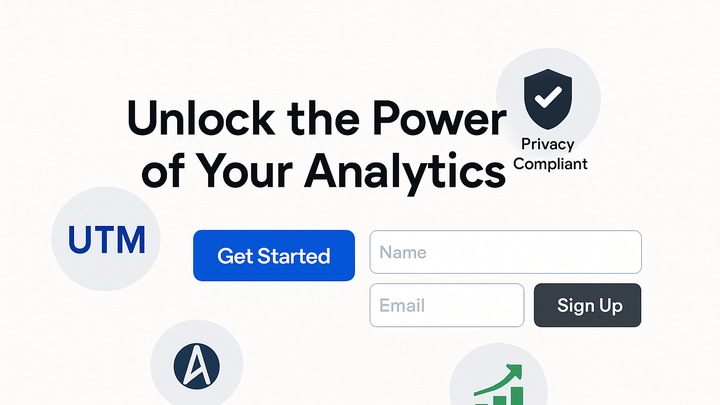Published on 2025-06-29T18:43:38Z
What is a Landing Page? Examples of Effective Campaign Landing Pages
A landing page is a standalone web page created specifically for marketing and advertising campaigns. Visitors “land” on this page after interacting with promotional links such as ads, email CTAs, or social media posts. A landing page is tailored to a single conversion goal—like capturing leads, driving downloads, encouraging sign-ups, or facilitating purchases—and removes distractions that can deter action. In campaign tracking and analytics, landing pages are vital for attributing traffic sources and measuring the success of individual campaigns. By integrating UTM parameters with a tool like utmguru.com and leveraging cookie-free analytics platforms such as plainsignal, marketers can gather precise data on visitor engagement without privacy concerns. With proper tracking code snippets (e.g., plainsignal’s script), teams can analyze metrics like conversion rate, bounce rate, and session duration to continually optimize page performance.
Landing page
Standalone campaign-specific web page focused on driving conversions and precise tracking using UTM parameters and cookie-free analytics.
Definition and Purpose
Explore the fundamental definition of a landing page and its strategic role in campaign tracking and analytics.
-
Landing page overview
A landing page is a standalone web page designed for a single marketing objective, separate from a website’s main navigation.
-
Role in campaign tracking
Landing pages serve as controlled environments for attributing traffic sources, measuring conversions, and isolating campaign performance.
Key Elements of an Effective Landing Page
Breakdown of critical components that make a landing page compelling and optimized for conversions.
-
Compelling headline
The headline is the first element visitors see; it should clearly state the offer and spark interest.
-
Clear call to action (cta)
A prominent CTA guides visitors toward the desired action, such as “Download Now” or “Sign Up.”
- Button design:
Use contrasting colors and concise text to draw attention.
- Placement:
Position CTAs above the fold and repeat if the page is long.
- Button design:
-
Lead capture form
Forms collect visitor information; the number of fields should balance data needs with ease of completion.
- Field quantity:
Maintain simplicity; ask only for essential information to reduce friction.
- Progressive profiling:
Collect additional information over time to improve lead quality without overwhelming users.
- Field quantity:
Analytics and Tracking Integration
Implement tracking tools and parameters on landing pages to capture campaign data accurately and inform optimization.
-
Utm parameters
Use UTM tags to identify the source, medium, campaign, term, and content of traffic arriving at the landing page.
- Generating utm urls with utmguru:
Leverage utmguru.com to build, store, and manage your UTM-tagged URLs efficiently.
- Best practices:
Maintain consistent naming conventions and lowercase letters to ensure clean analytics reporting.
- Generating utm urls with utmguru:
-
Cookie-free analytics
Implement cookie-free tracking solutions to measure visitor behavior without relying on third-party cookies.
- Implementing plainsignal:
Insert PlainSignal’s lightweight script snippet to enable privacy-compliant analytics.
- Script example:
<link rel="preconnect" href="//eu.plainsignal.com/" crossorigin /> <script defer data-do="yourwebsitedomain.com" data-id="0GQV1xmtzQQ" data-api="//eu.plainsignal.com" src="//cdn.plainsignal.com/plainsignal-min.js"></script>
- Implementing plainsignal:
-
Key metrics to monitor
Identify the most important metrics to evaluate the performance of your landing pages.
- Conversion rate:
Percentage of visitors who complete the desired action.
- Bounce rate:
Percentage of visitors who leave without interacting.
- Average session duration:
Average time visitors spend on the landing page.
- Conversion rate:
Testing and Optimization
Strategies for continuously improving landing page performance through data-driven testing and refinement.
-
A/b testing
Compare variations of headlines, CTAs, and layouts to determine the most effective combination.
-
Mobile optimization
Ensure the landing page provides a seamless experience on all device sizes.
-
Page load speed
Faster load times reduce bounce rates and improve user experience.
